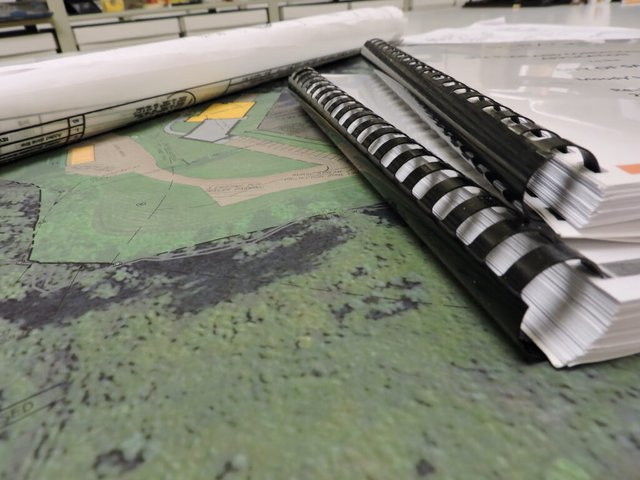A PRACTICAL GUIDE TO ENVIRONMENTAL PERMITS AND LICENSES: NAVIGATING UGANDA'S GREEN FRONTIER

Today, we'll embark on a journey through the lush landscapes of Uganda's environmental regulations, uncovering the secrets behind Environmental Permits and Licenses. Get ready to explore the "what," "why," "by who," "when," and "how" with us!
Understanding the Essence of Environmental Permits and Licenses:
Picture this – Environmental Permits and Licenses as your passport to a world where responsible development harmonizes with Mother Nature. These are not mere documents; they are your commitment to sustainable practices, endorsed by the regulatory authority, NEMA.
NEMA Uganda: Your Environmental Stewards
NEMA, the guardian of Uganda's environmental treasures, plays a pivotal role in issuing and overseeing Environmental Permits and Licenses. Our journey through compliance aligns with NEMA's vision for sustainable development and environmental preservation.
Navigating the Regulatory Landscape: Why Compliance Matters
- Ecosystem Safeguard:
• Environmental permits ensure that your activities are in tune with the delicate balance of Uganda's diverse ecosystems. - Public Welfare:
• Compliance is not just a legal checkbox; it's a commitment to public health and safety. It safeguards communities from potential environmental risks. - Legal Imperative:
• Non-compliance isn't just frowned upon; it's against the law. NEMA sets the standards, and adherence is non-negotiable. - Sustainable Progress:
• Permits are the roadmap to sustainable development, where progress is achieved without compromising the environment's integrity.
Applying, Obtaining and Retaining Environmental Permits
Applying, obtaining, and retaining environmental permits and licenses is a critical aspect of compliance management in any project or operation with environmental impacts. The procedure ensures adherence to legal and regulatory requirements, thereby avoiding potential legal issues and fostering sustainable practices. Here is a step-by-step procedure:
- Identification of Requirements
• Assess Project Activities: Evaluate the project or operational activities to determine the types of environmental permits and licenses required. Consider aspects such as emissions, discharges, waste management, and land use.
• Regulatory Research: Research local, regional, and national environmental regulations relevant to the project. Identify specific permits and licenses required under these regulations. - Pre-Application Preparation
• Documentation Gathering: Collect all necessary documentation required for the application. This may include project plans, environmental impact assessments, compliance plans, etc.
• Stakeholder Consultation: Engage with relevant stakeholders, including local communities, environmental groups, and government bodies, to understand their concerns and expectations. - Application Process
• Form Completion: Fill out the application forms for each required permit or license. Ensure accuracy and completeness to avoid delays.
• Supporting Documentation: Attach all required supporting documents, such as environmental assessments, management plans, monitoring data, etc.
• Submission: Submit the application and supporting documents to the appropriate regulatory authority. Keep a record of the submission date and any reference numbers. - Follow-Up and Communication
• Liaison with Authorities: Maintain regular communication with the regulatory authorities to track the progress of your application. Be prepared to provide additional information if requested.
• Address Queries: Promptly respond to any queries or requests for additional information from the regulatory authorities. - Permit/License Acquisition
• Review of Terms and Conditions: Once granted, review the terms and conditions of the permit or license carefully. Ensure that you understand all requirements, including monitoring, reporting, and compliance obligations.
• Document Management: Safely store the permit or license along with all related documentation for easy access and reference. - Compliance and Monitoring
• Implement Compliance Measures: Implement all required environmental management and monitoring measures as specified in the permit or license.
• Regular Monitoring: Conduct regular monitoring to ensure ongoing compliance with the terms of the permit or license. Document all monitoring activities. - Reporting
• Periodic Reporting: Prepare and submit any required reports to the regulatory authorities in a timely manner. These reports may include compliance reports, monitoring data, and incident reports. - Renewal and Updates
• Track Expiry Dates: Monitor the expiry dates of all permits and licenses and begin the renewal process well in advance.
• Update Information: If there are any changes to your operations that affect your environmental impact, update your permits and licenses accordingly. - Record Keeping and Documentation
• Maintain Records: Keep detailed records of all permits and licenses, applications, communications with authorities, compliance measures, monitoring data, and reporting. - Audits and Inspections
• Prepare for Audits: Regularly audit your compliance with permit and license conditions. Be prepared for inspections by regulatory authorities.
• Corrective Actions: Implement any necessary corrective actions identified during audits or inspections promptly.
This procedure should be dynamic and adaptable to the specific environmental, legal, and operational context of the project or organization. Regular training for staff involved in managing environmental permits and licenses is crucial to ensure they remain up-to-date with regulatory changes and best practices.